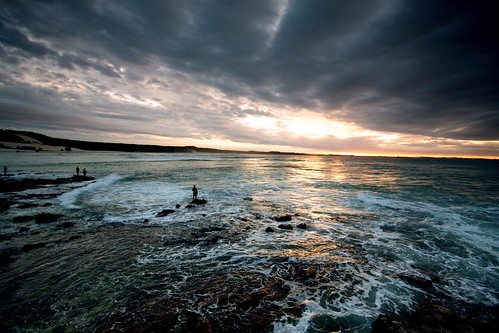 There are three main things that the aperture setting will affect: the amount of light coming through the lens, the depth of field of the photograph, and the sharpness of the photograph.
There are three main things that the aperture setting will affect: the amount of light coming through the lens, the depth of field of the photograph, and the sharpness of the photograph.There are times in photography where you will need as much light as possible coming through the lens - using a small f/number. This will give you a fast shutter speed. An example of this is sport, where your shutter speed needs to be quick to capture the moving subjects sharply.

There are also some photographs which can only be taken effectively when you need to lower the amount of light coming through the lens, with a higher f/number. This is when you want to achieve a slower shutter speed - such as a long exposure of cars driving on a highway at night.

So as you can see, controlling aperture is essential when you are in need of control of a specific shutter speed.
Aperture is also crucial in controlling depth of field of a photo. Depth of field is basically how much of the photo is in focus.
A narrow depth of field is great for photos where you want the subject to stand out from the background and foreground, such as a portrait:

A wide depth of field is great for photos that benefit from having as much as possible in focus, such as a landscape shot:

At other times, you may just want a photo as sharp as possible without worrying about shutter speed, such as shooting a landscape on a tripod. For this you should choose a mid-range f/number, usually around f/8-13 depending on the lens.

The best way to practice all of this is to go outside one day and shoot all day on Av mode, trying lots of different as you can and see the results. If you have a telephoto or wide aperture lens (one with a small f/stop such as 50mm f/1.8), use those as the results will be more exaggerated.
I shoot Av (aperture control) and M (manual control) 99% of the time, and most professionals will do the same. Controlling aperture to control shutter speed, depth of field and sharpness is a crucial part of being able to take a great photo, so make sure you practice with aperture as much as you can.
Good luck!
Cheers
Tal

You should really consider water marking your images.
ReplyDeleteI've never been interesting in watermarking.. As a hobbyist I dont really care if anyone steals my photos. Chris bray says 'anyone who steals a photo is never going to pay for it anyway, and anyone who is serious about buying it wouldn't steal it'. Have to agree there.
ReplyDeleteFrom an artistic point of view I also prefer the images to stand alone without distraction.
:) tal